Foreword
Preface
Acknowledgments
Contents
Acronyms
1 Nonlinear Dynamical Systems and Global Linearizing Control Methods
1.1 Introduction
1.2 Characteristics of the Dynamics of Nonlinear Systems
1.3 Computation of Isoclines
1.4 Basic Features in the Study of Nonlinear Dynamics
1.4.1 The Phase Diagram
1.4.2 Stability Analysis of Nonlinear Systems
1.4.3 Stability Analysis of Nonlinear Models
1.5 Phase Diagrams and Equilibria of Nonlinear Models
1.5.1 Phase Diagrams for Linear Dynamical Systems
1.5.2 Multiple Equilibria for Nonlinear Dynamical Systems
1.5.3 Limit Cycles
1.6 Bifurcations in Nonlinear Dynamics
1.6.1 Bifurcations of Fixed Points of Nonlinear Models
1.6.2 Saddle-Node Bifurcations of Fixed Points in a One-Dimensional System
1.6.3 Pitchfork Bifurcation of Fixed Points
1.6.4 The Hopf Bifurcation
1.7 Predecessors of Differential Flatness Theory
1.7.1 The Differential Geometric Approach
1.7.2 Elaboration on the Frobenius Theorem
1.7.3 Input--Output Linearization
1.7.4 Elaborating on Input--Output Linearization
1.7.5 Input-State Linearization
1.7.6 Stages in the Implementation of Input-State Linearization
1.7.7 Input--Output and Input-State Linearization for MIMO Systems
1.7.8 Dynamic Extension
2 Differential Flatness Theory and Flatness-Based Control
2.1 Introduction
2.2 Definition of Differentially Flat Systems
2.2.1 The Background of Differential Flatness Theory
2.2.2 Differential Flatness for Finite Dimensional Systems
2.3 Properties of Differentially Flat Systems
2.3.1 Equivalence and Differential Flatness
2.3.2 Differential Flatness and Trajectory Planning
2.3.3 Differential Flatness, Feedback Control and Equivalence
2.4 Flatness-Based Control and State Feedback for Systems
2.5 Classification of Types of Differentially Flat Systems
2.5.1 Criteria About the Differential Flatness of a System
2.5.2 A Sufficient Condition for Showing that a System Is Not Differentially Flat
2.5.3 Liouvillian and Nondifferentially Flat Systems
2.6 Elaborated Criteria for Checking Differential Flatness
2.6.1 Implicit Control Systems on Manifolds of Jets
2.6.2 The Lie-Backlünd Equivalence for Implicit Systems
2.6.3 Conditions for Differential Flatness of Implicit Systems
2.6.4 Example of Elaborated Differential Flatness Criteria to Nonlinear Systems
2.7 Distributed Parameter Systems and Their Transformation
2.7.1 State-Space Description of a Heat Diffusion Dynamics
2.7.2 Differential Flatness of the Nonlinear Heat Diffusion PDE
3 Nonlinear Adaptive Control Based on Differential Flatness Theory
3.1 Introduction
3.2 Flatness-Based Adaptive Neuro-Fuzzy Control for SISO Systems
3.2.1 Overview
3.3 Flatness-Based Adaptive Fuzzy Control for SISO Dynamical Systems
3.3.1 Transformation of SISO Nonlinear Systems into a Canonical Form
3.3.2 Adaptive Control Law for SISO Nonlinear Systems
3.3.3 Approximators of SISO System Unknown Dynamics
3.3.4 Lyapunov Stability Analysis for SISO Dynamical Systems
3.3.5 Simulation Tests
3.4 Flatness-Based Adaptive Fuzzy Control for MIMO Systems
3.4.1 Overview
3.4.2 Differential Flatness for MIMO Nonlinear Dynamical Systems
3.4.3 Flatness-Based Adaptive Fuzzy Control for MIMO Nonlinear Systems
3.4.4 Flatness-Based Control for a MIMO Robotic Manipulator
3.4.5 Lyapunov Stability Analysis for MIMO Nonlinear Systems
3.4.6 Simulation Tests
4 Nonlinear Kalman Filtering Based on Differential Flatness Theory
4.1 Introduction
4.2 The Derivative-Free Nonlinear Kalman Filter
4.2.1 Overview
4.2.2 Extended Kalman Filtering for Nonlinear Dynamical Systems
4.2.3 Derivative-Free Kalman Filtering to SISO Nonlinear Systems
4.2.4 Simulation Tests
4.2.5 Derivative-Free Kalman Filtering for MIMO Nonlinear Systems
4.2.6 Simulation Tests
4.3 The Derivative-Free Distributed Nonlinear Kalman Filter
4.3.1 Overview
4.3.2 Overview of the Extended Information Filter
4.3.3 Distributed Filtering for Sensorless Control
4.3.4 Simulation Tests
5 Differential Flatness Theory and Industrial Robotics
5.1 Overview
5.2 Adaptive Fuzzy Control of Underactuated MIMO Robots
5.2.1 Overview
5.2.2 Dynamic Model of the Closed-Chain 2-DOF Robotic System
5.2.3 Linearization of the Closed-Chain 2-DOF Robotic System Using Lie Algebra Theory
5.2.4 Differential Flatness of the Underactuated Manipulator
5.2.5 Flatness-Based Adaptive Fuzzy Control for the Underactuated Robot
5.2.6 Simulation Tests
5.3 Observer-Based Adaptive Fuzzy Control of MIMO Robots
5.3.1 Overview
5.3.2 Estimation of the Robot's State Vector
5.3.3 Application of Flatness-Based Adaptive Fuzzy Control
5.3.4 Dynamics of the Observation Error
5.3.5 Approximation of the System's Unknown Dynamics
5.3.6 Lyapunov Stability Analysis
5.3.7 The Role of Riccati Equation Coefficients in Observer-Based Adaptive Fuzzy Control
5.3.8 Simulation Tests
5.4 State Estimation-Based Control of Underactuated Robots
5.4.1 Overview
5.4.2 Derivative-Free Nonlinear Kalman Filter for the Closed-Chain 2-DOF Robotic System
5.4.3 Simulation Tests
5.5 Distributed Filtering Under External Disturbances
5.5.1 Overview
5.5.2 Dynamics and Control of the Robot
5.5.3 Simulation Tests
5.6 Distributed Nonlinear Filtering Under Measurement Delays
5.6.1 Networked Control Under Communication Disturbances
5.6.2 Networked Kalman Filtering for an Autonomous System
5.6.3 Smoothing Estimation in Case of Delayed Measurements
5.6.4 Distributed Filtering-Based Fusion of the Robot's State Estimates
5.6.5 Simulation Tests
6 Differential Flatness Theory in Mobile Robotics and Autonomous Vehicles
6.1 Outline
6.2 State Estimation-Based Control of Autonomous Vehicles
6.2.1 Localization and Autonomous Navigation of Ground Vehicles
6.2.2 Application of Derivative-Free Kalman Filtering to MIMO UGV Models
6.2.3 Controller Design for UGVs
6.2.4 Derivative-Free Kalman Filtering for UGVs
6.2.5 Simulation Tests
6.2.6 Derivative-Free Kalman Filter-Based Navigation of the Autonomous Vehicle
6.3 State Estimation-Based Control and Synchronization of Cooperating Vehicles
6.3.1 Overview
6.3.2 Distributed Kalman Filtering for Unmanned Ground Vehicles
6.3.3 Simulation Tests
6.4 Distributed Fault Diagnosis for Autonomous Vehicles
6.4.1 Integrity Testing in Navigation Sensors of AGVs
6.4.2 Sensor Fusion for AGV Navigation
6.4.3 Canonical Form for the AGV Model
6.4.4 Derivative-Free Extended Information Filtering for UGVs
6.4.5 Simulation Tests
6.5 Velocity Control of 4-Wheel Vehicles
6.5.1 Overview
6.5.2 Dynamic Model of the Vehicle
6.5.3 Flatness-Based Controller for the 3-DOF Vehicle Model
6.5.4 Estimation of Vehicle Disturbance Forces with Kalman Filtering
6.5.5 Simulation Tests
6.6 Active Vehicle Suspension Control
6.6.1 Overview
6.6.2 Dynamic Model of Vehicle Suspension
6.6.3 Flatness-Based Control for a Suspension Model
6.6.4 Compensating for Model Uncertainty with the Use of the Hinfty Kalman Filter
6.6.5 Robust State Estimation with the Use of Disturbance Observers
6.6.6 Simulation Tests
6.7 State Estimation-Based Control of Quadrotors
6.7.1 Overview
6.7.2 Kinematic Model of the Quadropter
6.7.3 Euler-Lagrange Equations for the Quadropter
6.7.4 Design of Flatness-Based Controller for the Quadrotor's Model
6.7.5 Estimation of the Quadrotor's Disturbance Forces and Torques with Kalman Filtering
6.7.6 Simulation Tests
6.8 State Estimation-Based Control of the Underactuated Hovercraft
6.8.1 Overview
6.8.2 Lie Algebra-Based Control of the Underactuated Hovercraft
6.8.3 Flatness-Based Control of the Underactuated Vessel
6.8.4 Disturbances' Compensation with the Use of the Derivative-Free Nonlinear Kalman Filter
6.8.5 Simulation Tests
7 Differential Flatness Theory and Electric Power Generation
7.1 Outline
7.2 State Estimation-Based Control of PMSGs
7.2.1 The PMSG Control Problem
7.2.2 Dynamic Model of the Permanent Magnet Synchronous Generator
7.2.3 Lie Algebra-Based Design of State Estimators for the PMSG
7.2.4 Differential Flatness of the PMSG
7.2.5 Estimation of PMSG Disturbance Input with Kalman Filtering
7.2.6 Simulation Experiments
7.3 State Estimation-Based Control of DFIGs
7.3.1 Overview
7.3.2 The Complete Sixth-Order Model of the Induction Generator
7.3.3 Input--Output Linearization of the DFIG Using Lie Algebra
7.3.4 Input--Output Linearization of the DFIG Using Differential Flatness Theory
7.3.5 Kalman Filter-Based Disturbance Observer for the DFIG Model
7.3.6 Simulation Tests
7.4 Flatness-Based Control of DFIG in Cascading Loops
7.4.1 Overview
7.4.2 A New Proof of the Differential Flatness of the DFIG
7.4.3 Control of the DFIG in Cascading Loops
7.4.4 EKF Implementation for Sensorless Control of the DFIG
7.4.5 Simulation Tests
7.5 State Estimation-Based Control of Distributed PMSGs
7.5.1 Overview
7.5.2 Dynamic Model of the Distributed Power Generation Units
7.5.3 Lie Algebra-Based Design of a Feedback Controller for the PMSG
7.5.4 Differential Flatness of the Distributed PMSG Model
7.5.5 Simulation Tests
8 Differential Flatness Theory for Electric Motors and Actuators
8.1 Introduction
8.2 Flatness-Based Adaptive Control of DC Motors
8.2.1 Overview
8.2.2 Dynamics and Linearization of the DC Motor Model
8.3 Flatness-Based Control of Induction Motors in Cascading Loops
8.3.1 Overview
8.3.2 A Cascading Loops Scheme for Control of Field-Oriented Induction Motors
8.3.3 A Flatness-Based Control Approach for Induction Motors
8.3.4 Implementation of the EKF for the Nonlinear Induction Motor Model
8.3.5 Unscented Kalman Filtering for Induction Motor Control
8.4 Simulation Results
8.5 Flatness-Based Adaptive Control of Electrostatic MEMS Using Output Feedback
8.5.1 Introduction
8.5.2 Dynamic Model of the Electrostatic Actuator
8.5.3 Linearization of the MEMS Model Using Lie Algebra
8.5.4 Differential Flatness of the Electrostatic Actuator
8.5.5 Adaptive Fuzzy Control of the MEMS Model Using Output Feedback
8.5.6 Lyapunov Stability Analysis
8.5.7 Simulation Tests
9 Differential Flatness Theory in Power Electronics
9.1 Introduction
9.2 Three-Phase Voltage Source Converters Control
9.2.1 Overview
9.2.2 Linearization of the Converter's Model Using Lie Algebra
9.2.3 Differential Flatness of the Voltage Source Converter
9.2.4 Kalman Filter-Based Disturbance Observer for the VSC Model
9.2.5 Simulation Tests
9.3 Inverters Control
9.3.1 Overview
9.3.2 Dynamic Model of the Inverter
9.3.3 Lie Algebra-Based Control of the Inverter's Model
9.3.4 Differential Flatness of the Inverter's Model
9.3.5 Flatness-Based Control of the Inverter
9.3.6 State and Disturbances Estimation with Nonlinear Kalman Filtering
9.3.7 Simulation Tests
9.4 Distributed Inverters Synchronization
9.4.1 Overview
9.4.2 The Synchronization Problem for Parallel Inverters
9.5 State and Disturbances Estimation of Parallel Inverters with Nonlinear Kalman Filtering
9.6 Simulation Tests
10 Differential Flatness Theory for Internal Combustion Engines
10.1 Overview
10.2 Flatness-Based Control of Valves in Marine Diesel Engines
10.2.1 Overview
10.2.2 Dynamic Model of the Valve
10.2.3 Input--Output Linearization Using Lie Algebra
10.2.4 Input--Output Linearization Using Differential Flatness Theory
10.2.5 Disturbances Compensation with Derivative-Free Nonlinear Kalman Filter
10.2.6 Simulation Tests
10.3 Flatness-Based Control of Diesel Combustion Engines
10.3.1 Overview
10.3.2 Dynamic Model of the Turbocharged Diesel Engine
10.3.3 Nonlinear Control of the Diesel Engine Using Lie Algebra
10.3.4 A Dynamic Extension-Based Feedback Control Scheme
10.3.5 Nonlinear Control of the Diesel Engine Using Differential Flatness Theory
10.3.6 Disturbances Compensation Using the Derivative-Free Nonlinear Kalman Filter
10.3.7 Simulation Tests
10.4 Adaptive Control for Diesel Combustion Engines
10.4.1 Overview
10.4.2 Observer-Based Adaptive Fuzzy Control for the Diesel Combustion Engine
10.4.3 Application of Flatness-Based Adaptive Fuzzy Control to the MIMO Diesel Engine Model
10.4.4 Lyapunov Stability Analysis
10.4.5 Simulation Tests
10.5 Flatness-Based Control and Kalman Filtering for the Spark-Ignited Engine
10.5.1 Overview
10.5.2 Dynamic Model of the SI Engine
10.5.3 Feedback Linearizing Control of the SI Engine Using Lie Algebra
10.5.4 Feedback Linearizing Control of the SI Engine Using Differential Flatness Theory
10.5.5 Compensation of Disturbances Using the Derivative-Free Nonlinear Kalman Filter
10.5.6 Simulation Tests
10.6 Flatness-Based Adaptive Fuzzy Control of the Spark-Ignited Engine
10.6.1 Overview
10.6.2 Flatness-Based Adaptive Fuzzy Control for SI Motors
10.6.3 Lyapunov Stability Analysis
10.6.4 Simulation Tests
10.7 Flatness-Based Control and Kalman Filtering of the Air--Fuel Ratio
10.7.1 Overview
10.8 Dynamic Model of the Air--Fuel Ratio System
10.8.1 The Air and Fuel Flow Models
10.8.2 Dynamics of the Air--Fuel Ratio System
10.8.3 Differential Flatness of the Air--Fuel Ratio System
10.8.4 Flatness-Based Control of the Air--Fuel Ratio System
10.8.5 Compensation of Uncertainties with the Derivative-Free Nonlinear Kalman Filter
10.8.6 Simulation Tests
11 Differential Flatness Theory for Chaotic Dynamical Systems
11.1 Introduction
11.2 Flatness-Based Control of Chaotic Dynamical Systems
11.2.1 Overview
11.2.2 Differential Flatness of Chaotic Dynamical Systems
11.2.3 Flatness-Based Adaptive Fuzzy Control for Chaotic Systems
11.2.4 Design of the Feedback Controller
11.2.5 Approximators of Unknown System Dynamics
11.2.6 Lyapunov Stability Analysis
11.2.7 Nonlinear Feedback Control of Chaotic Systems Based on Fuzzy Local Linearization
11.2.8 Simulation Tests
11.3 Differential Flatness Theory for Chaos-Based Communication Systems
11.3.1 Overview
11.3.2 Structure of the Chaotic Communication System
11.3.3 Differential Flatness Theory
11.3.4 Estimation in Chaotic Modulators with Nonlinear Kalman Filter
11.3.5 Channel Equalization and Synchronization Using Dual Kalman Filtering
11.3.6 Simulation Tests
12 Differential Flatness Theory for Distributed Parameter Systems
12.1 Introduction
12.2 Pointwise Flatness-Based Control of Distributed Parameter Systems
12.2.1 Overview
12.2.2 Nonlinear 1D Wave-Type Partial Differential Equations
12.2.3 Sine-Gordon Nonlinear PDE in the Model of the Josephson Junction
12.2.4 Current Equation in a Josepshon Transmission Line
12.2.5 State-Space Description of the Nonlinear Wave Dynamics
12.2.6 Solution of the Control and Estimation Problem for Nonlinear Wave Dynamics
12.2.7 Simulation Tests
12.3 Control of Heat Diffusion in Arc Welding Using Differential Flatness Theory and Nonlinear Kalman Filtering
12.3.1 Overview
12.4 Dynamic Model of the Arc Welding Process
12.5 State-Space Description of the Nonlinear Heat Diffusion Dynamics
12.6 Solution of the Control and Estimation Problem for Nonlinear Heat Diffusion
12.6.1 Solution of the Control Problem
12.6.2 Solution of the Estimation Problem
12.7 Simulation Tests
12.8 Fault Detection and Isolation in Distributed Parameter Systems
12.8.1 Overview
12.8.2 Estimation of Nonlinear Wave Dynamics
12.8.3 Equivalence Between Kalman Filters and Regressor Models
12.8.4 Change Detection with the Local Statistical Approach
12.8.5 Simulation Tests
12.9 Application to Condition Monitoring of Civil and Mechanical Structures
12.9.1 Overview
12.9.2 Dynamical Model of the Building---Mechanical Structure
12.10 Differential Flatness of the Multi-DOF Building's Structure
12.10.1 Damage Detection with the Use of Statistical Criteria
12.10.2 Disturbances Estimation with the Derivative-Free Nonlinear Kalman Filter
12.10.3 Simulation Tests
13 Differential Flatness Theory in the Background of Other Control Methods
13.1 Differential Flatness Theory in the Background of Backstepping Control
13.1.1 Overview
13.1.2 Flatness-Based Control Through Transformation into the Canonical Form
13.1.3 A New Approach to Flatness-Based Control for Nonlinear Dynamical Systems
13.1.4 Closed-Loop Dynamics
13.1.5 Comparison to Backstepping Control
13.1.6 Simulation Tests
13.2 Differential Flatness and Optimal Control
13.3 Boundary Control of Nonlinear PDE Dynamics Using
13.3.1 Overview
13.3.2 Transformation of the PDE Model into a Set of Nonlinear ODEs
13.3.3 Differential Flatness of the Nonlinear PDE Model
13.3.4 Computation of a Boundary Conditions-Based Feedback Control Law
13.3.5 Closed-Loop Dynamics
13.3.6 Simulation Tests
References
Index
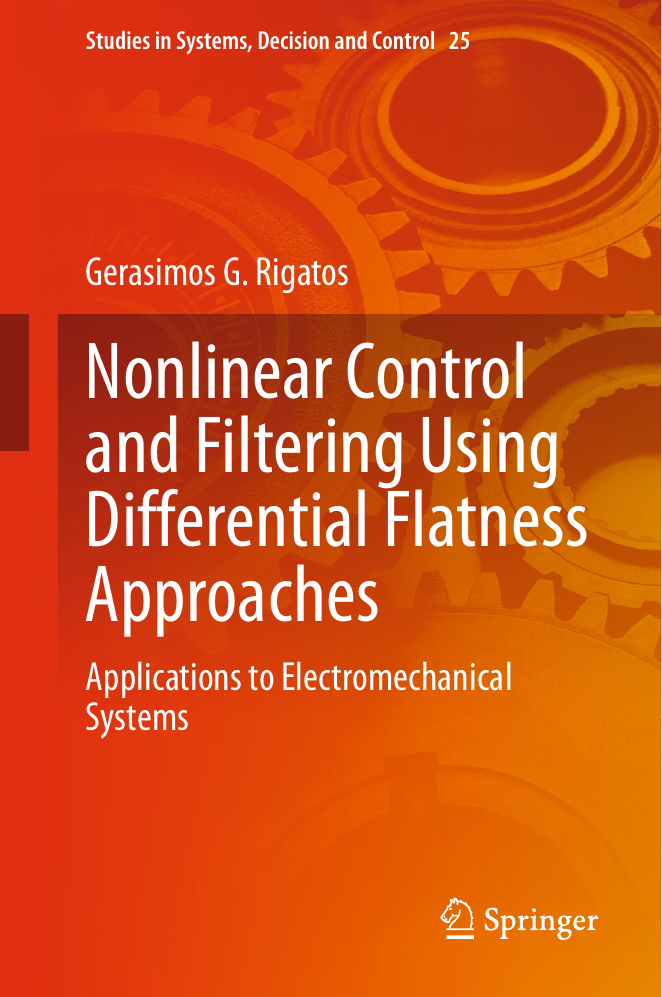
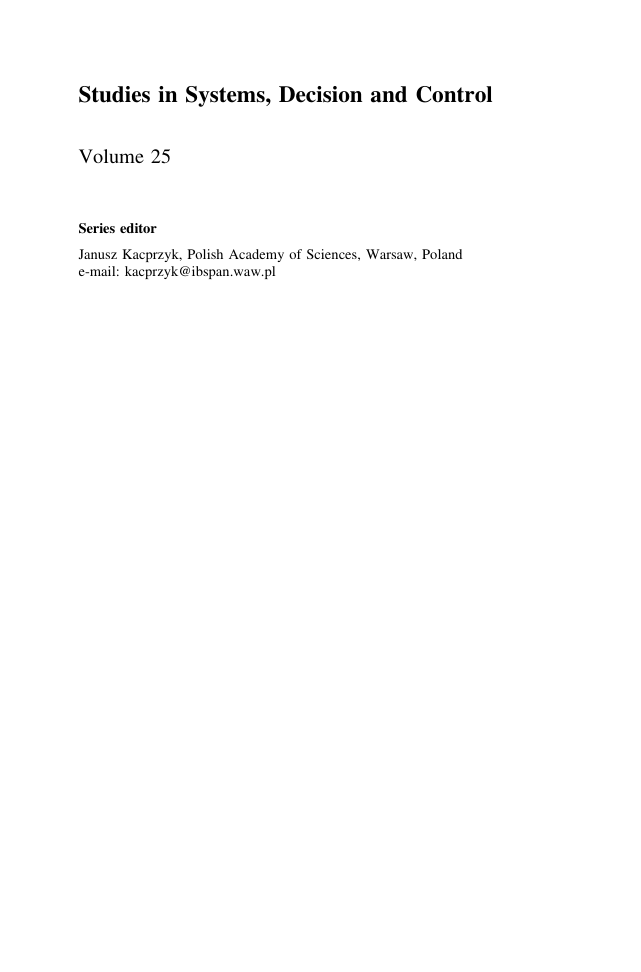

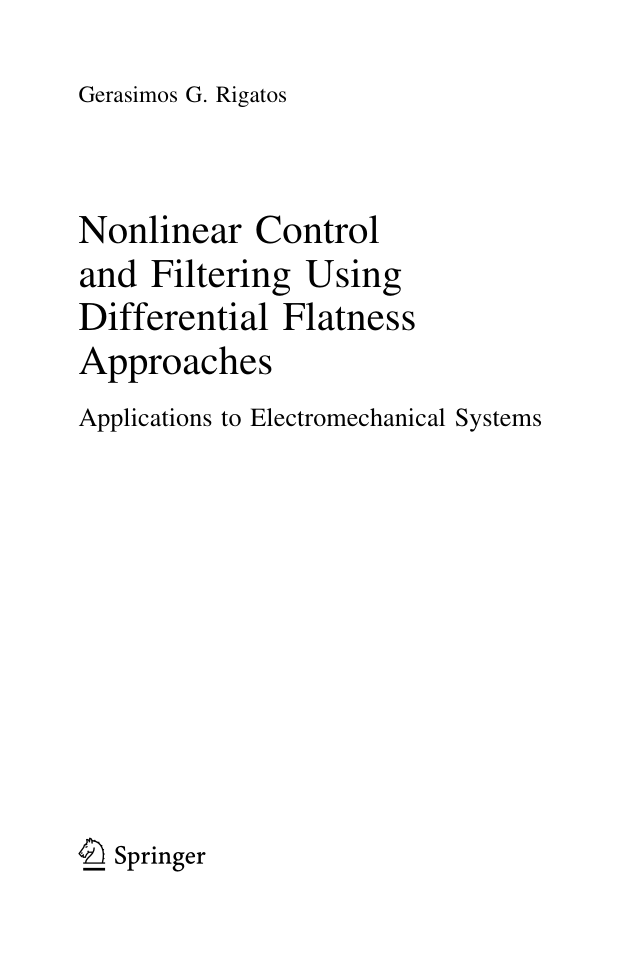
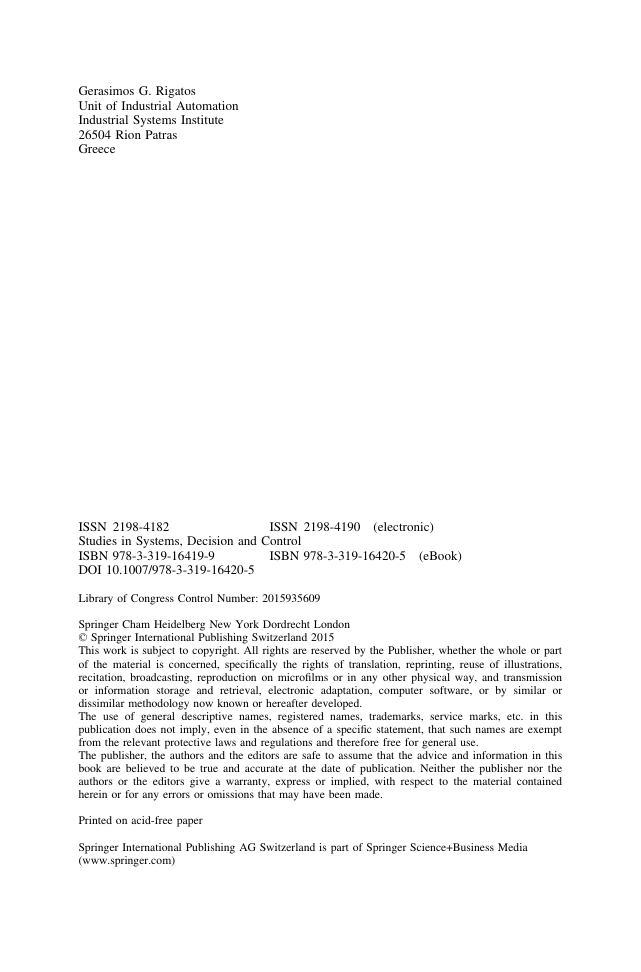

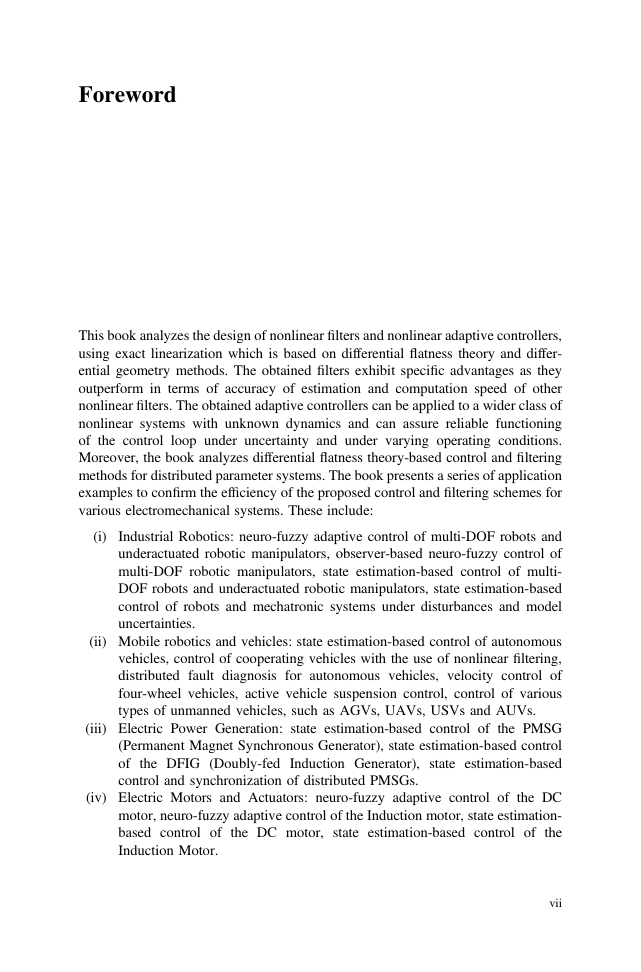
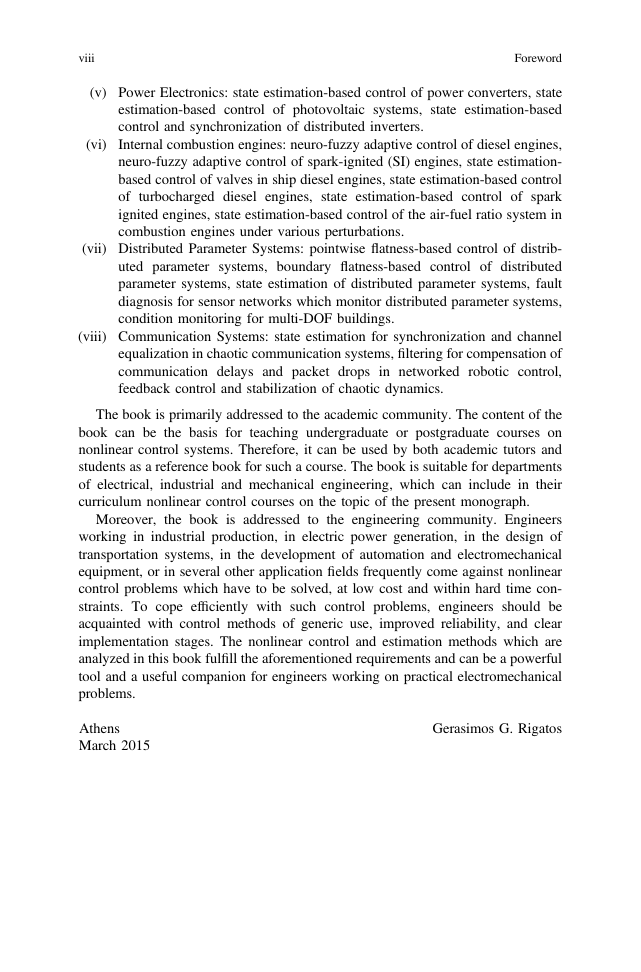








 2023年江西萍乡中考道德与法治真题及答案.doc
2023年江西萍乡中考道德与法治真题及答案.doc 2012年重庆南川中考生物真题及答案.doc
2012年重庆南川中考生物真题及答案.doc 2013年江西师范大学地理学综合及文艺理论基础考研真题.doc
2013年江西师范大学地理学综合及文艺理论基础考研真题.doc 2020年四川甘孜小升初语文真题及答案I卷.doc
2020年四川甘孜小升初语文真题及答案I卷.doc 2020年注册岩土工程师专业基础考试真题及答案.doc
2020年注册岩土工程师专业基础考试真题及答案.doc 2023-2024学年福建省厦门市九年级上学期数学月考试题及答案.doc
2023-2024学年福建省厦门市九年级上学期数学月考试题及答案.doc 2021-2022学年辽宁省沈阳市大东区九年级上学期语文期末试题及答案.doc
2021-2022学年辽宁省沈阳市大东区九年级上学期语文期末试题及答案.doc 2022-2023学年北京东城区初三第一学期物理期末试卷及答案.doc
2022-2023学年北京东城区初三第一学期物理期末试卷及答案.doc 2018上半年江西教师资格初中地理学科知识与教学能力真题及答案.doc
2018上半年江西教师资格初中地理学科知识与教学能力真题及答案.doc 2012年河北国家公务员申论考试真题及答案-省级.doc
2012年河北国家公务员申论考试真题及答案-省级.doc 2020-2021学年江苏省扬州市江都区邵樊片九年级上学期数学第一次质量检测试题及答案.doc
2020-2021学年江苏省扬州市江都区邵樊片九年级上学期数学第一次质量检测试题及答案.doc 2022下半年黑龙江教师资格证中学综合素质真题及答案.doc
2022下半年黑龙江教师资格证中学综合素质真题及答案.doc